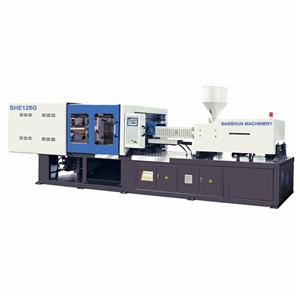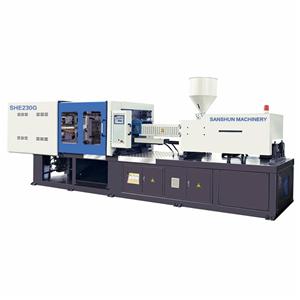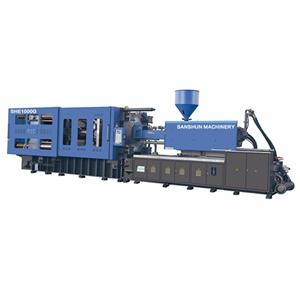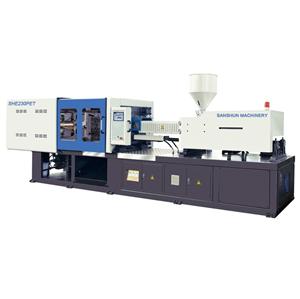- Home
- >
- News & Resources
- >
- Our Blog
- >
- Application of gas-assisted injection molding process
1、 the principle of gas-assisted injection molding uses high-pressure inert gas (nitrogen) to inject into the molten plastic to form a vacuum section and promote the advancement of the melt to achieve injection, pressure holding, cooling and other processes. Due to the high pressure transfer property of the gas, the pressure inside the air passage can be kept consistent, thereby eliminating internal stress, preventing product deformation, and greatly reducing the pressure in the cavity, so that it is not required to be high in the molding process. The clamping force can also reduce the weight of the product and eliminate the sink marks.
2, gas auxiliary equipment
The gas auxiliary equipment includes a gas auxiliary control unit and a nitrogen generating device. It is another system independent of the injection molding machine, and its only interface with the injection molding machine is the injection signal connection line. After the injection molding machine sends an injection signal injection start or screw position to the gas-assisted control unit, a gas injection process is started, and another injection signal is given at the beginning of the next injection process to start another cycle, and so on. The gas used for gas-assisted injection molding must be an inert gas (usually nitrogen). The maximum pressure of the gas is 35 MPa, the special one can reach 70 MPa, and the nitrogen purity is ≥98%. The gas-assisted control unit is a device for controlling the gas injection time and the gas injection pressure. It has multiple sets of gas path designs, which can simultaneously control the gas-assisted production of multiple injection molding machines. The gas-assisted control unit is equipped with a gas recovery function to reduce the gas as much as possible. Consumption.
3. Gas-assisted process control
1. Gas injection parameters
The gas-assisted control unit is a device that controls the gas pressure at each stage. The gas-assisted parameters have only two values: gas injection time (seconds) and gas injection pressure (MPa).
2. Gas-assisted injection molding process is to inject high-pressure gas into the mold while injecting high-pressure gas. There is a complex two-phase interaction between the melt and the gas. Therefore, the control of process parameters is very important. The control methods of each parameter are as follows:
a injection volume
Gas-assisted injection molding uses a so-called "short-shot" method in which a certain amount of material (usually 70-95% at full shot) is injected into the cavity, and then gas is injected to achieve a full filling process. The amount of melt injection is the largest in relation to the airway size of the mold and the cavity structure. The larger the air passage section, the easier the gas penetrates and the higher the hollowing rate, which is suitable for adopting a larger "short-shoot rate". At this time, if too much material is used, it is easy to cause the melt to accumulate, and the shrinkage is likely to occur in many places. If it is too small, it will cause blow-through. If the airway is exactly the same as the direction of the flow, it is most conducive to the penetration of the gas, and the airway has the highest voiding rate. Therefore, the air passage should be kept in the same direction as the flow direction when designing the mold.
b Injection speed and pressure holding
In the case of ensuring that the product performance does not appear defective, the higher injection speed is used as much as possible, so that the molten material is filled into the cavity as soon as possible, and the temperature of the melt remains high, which is favorable for gas penetration and filling. The gas still maintains a certain pressure after pushing the molten material to fill the cavity, which is equivalent to the pressure holding stage in the conventional injection molding. Therefore, generally speaking, the gas-assisted injection molding process can save the process of holding the pressure by the injection molding machine.
However, some products still need to use certain injection molding pressure to ensure the quality of product performance due to structural reasons. However, it is not allowed to use high pressure holding, because the high pressure will seal the gas needle, the gas in the chamber can not be recovered, and it is easy to generate blow when opening the mold. High pressure holding will also hinder gas penetration, and increasing the pressure of injection molding may cause the product to show more shrinkage.
c gas pressure and gas injection speed
Gas pressure has the greatest relationship to the fluidity of the material. Materials with good fluidity (such as PP) use a lower injection pressure.
The gas pressure is large, easy to penetrate, but easy to blow through; the gas pressure is small, there may be insufficient filling, the filling is not full or the surface of the product has a sink mark; the gas injection speed is high, and the cavity can be filled at a high melting temperature. . For molds with long process or small air passages, increasing the gas injection speed is beneficial to the filling of the melt glue, which can improve the quality of the surface of the product. However, if the gas injection speed is too fast, blow molding may occur, and the product with large air passage may be Surface flow marks and gas lines will be produced.
d delay time
The delay time is the time period from the start of injection molding of the injection molding machine to the start of gas injection by the gas auxiliary control unit, which can be understood as the parameter of the “synchronization” of the reverse mapping glue and the gas injection. The delay time is short, that is, the gas injection starts at a higher temperature, which is obviously beneficial to gas penetration and filling, but the delay time is too short, the gas is easy to diverge, the hollow shape is not good, and the hollowing rate is also not enough.
4, gas-assisted mold
Gas-assisted molds are not much different from traditional injection molds, only the intake components (called gas needles) are added, and the air passage design is increased. The so-called "airway" can be simply understood as the passage of gas, that is, the part through which the gas flows, the airway is some part of the product, and some are specially designed glue points for guiding the airflow.
Gas needle is a key component of gas-assisted mold, which directly affects process stability and product quality. The core part of the gas needle is blocked by the melt glue due to a large number of small gaps, and the amount of gas is reduced.
5. Gas-assisted injection molding process
The gas-assisted injection molding process has four steps:
The first step of resin filling: the mold is partially filled with melt.
The second step is gas filling: nitrogen is injected into the hot melt as required. The gas flows rapidly in the high temperature and low pressure areas. The direction of gas flow is usually the direction of least resistance. Depending on the design, the airway should be placed where it is convenient to direct the gas to the low pressure area. a hot-melt material at a thick section of the plastic part replaced by a pressurized gas, and the pressure gas is used to complete the filling of the plastic;
The third step of gas holding pressure: due to the interaction of the melt and the gas, after the mold is filled, the nitrogen gas remains in the gas flow path of the plastic part, and it has sufficient pressure to compact the plastic part. The resin then cools and contracts, and the gas compression channel has not yet solidified resin into the voids caused by shrinkage. The pressure holding pressure is used to eliminate the shrinkage on the surface of the plastic part, and the mold has a good surface quality in the next molding cycle to form a plastic part with good surface quality;
The fourth step of gas discharge: all the gases required in the whole process must be discharged before opening the mold. If the pressure gas is not discharged in time, the plastic part will swell or even swell.







